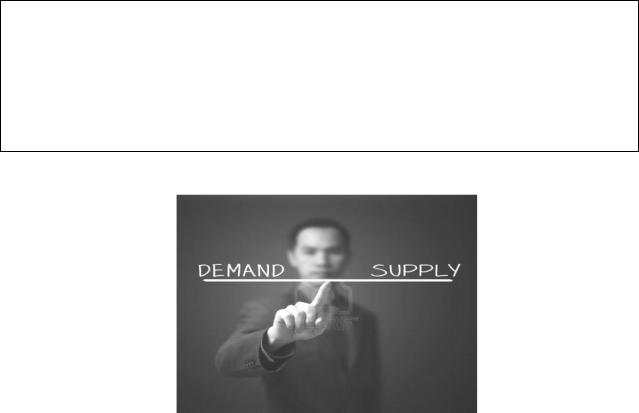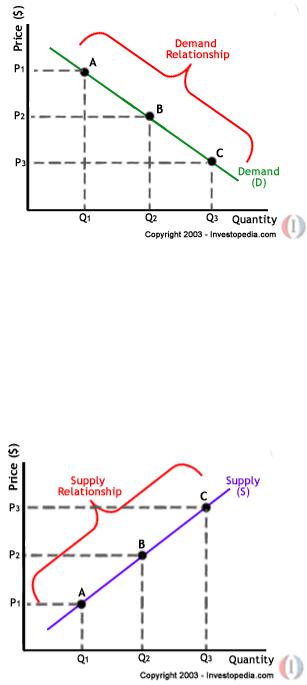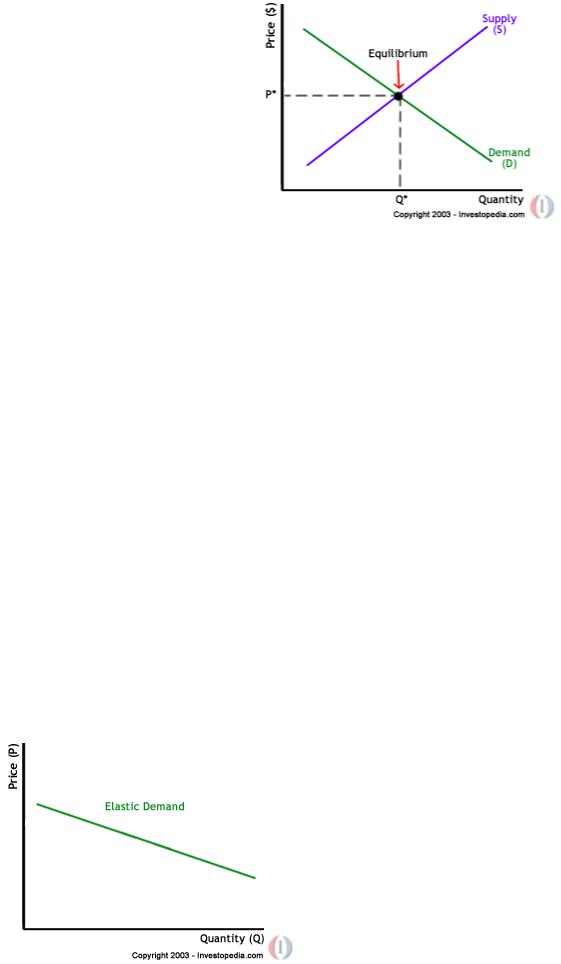
POSIBNIK_1_KURS
.pdfEx.34. After three months of looking for work, Cathy was at last called for an interview. Complete the following extract from her interview by putting the verbs in brackets into the correct past tense form.
Interviewer: |
So how long ______ you _______ (work) for that company? |
Cathy: |
About two years. |
Interviewer: |
And what ______ you _______(do) while you ______ (work) |
|
there? |
Cathy: |
First, I _______ (take part) in the project of investigating their |
|
motivation problems. |
Interviewer: |
It sounds interesting. And what _______ the results _______ |
|
show? |
Cathy: |
I can’t really say anything definite. While we ________ |
|
(process) the results, the company ______ (decide) to postpone |
|
the project for some time later. |
Interviewer: |
I see. _____ you ______ (move) on to another project? |
Cathy: |
Yes. But again, as soon as our team ______(start) the project, |
|
serious problems ______(arise). While we _______(develop) a |
|
new working model, the funds for the programme ______ |
|
(stop). So, I ________ (decide) to leave them and make a fresh |
|
start. That is why I’m here. |
Ex.35. Correct the mistakes if there are any.
1.The sun raised at 6.30.
2.When Tom came home, his wife cooking dinner.
3.Tim hurted his foot when he was playing football.
4.I couldn’t answer your call. I worked in the garden then.
5.I was going to phone you later, but it sliped my mind.
6.Ali has bought a very expensive car a month ago.
7.Alice was cleaning the house all morning.
8.Do you remember the things we used to do when we were kids?
9.Hilary chosed to ignore the doctor’s warning.
10.While Richard drove to Yellowstone National Park he met a deer on the road. 11.How he damaged his car so badly? – I don’t know exactly, but I’m sure he was
driving too fast.
12.In1888, George Eastman has introduced the first Kodak camera. 13.At midnight, I still worked at a computer though I was feeling ill.
Ex.36. Translate into English.
1.Вчора я отримала по факсу дуже цінне/важливе повідомлення про злиття (themerger) наших компанії.
2.Коли я увійшов до аудиторії, студенти все ще обговорювали доповідь.
3.Я раніше плавала кожен день. Зараз плаваю лише тричі на тиждень.
4.Одрі Хепберн знялася (tostar) не в багатьох фільмах, але залишила незабутній слід в історії кіно.
5.Фільм, який я вчора бачила дуже вразив мене.
101

6.Поїзд наближався до станції. Пасажири стояли біля вікон та махали (towave) капелюхами.
7.Аманда закінчила університет, отримала гарну пропозицію та стала менеджером великої міжнародної компанії.
8.Секретарка друкувала доповідь, коли увійшов директор та поклав папери на стіл.
9.Минулого року ми з сім’єю відвідали Історичний музей.
10.Джесіка готувалась до іспиту, в той час, як Яків дивився аналітичну програму по телевізору.
11.Колись мама пекла великий торт мені на день народження. Зараз ми купуємо торти в супермаркеті.
12.Коли ми купались в озері, Мері готувала нам обід.
13.Це був ясний літній ранок. Вона сиділа в кафе в центрі Парижу і пила свою ранкову каву.
14. Вони саме будували цей міст, коли я був тут минулого року.
15.Всі спокійно читали, коли раптово двері відчинились і увійшов незнайомець.
THE PAST SIMPLE versus THE PRESENT PERFECT
Ex.37. Choose the correct tense, either the Past Simple or the Present Perfect.
1.Dan Brown, an American author of thriller fiction, best known for the 2003 bestselling novel ‘The Da Vinci Code’has so far written/wrote so far seven books, with two being adapted to cinema.
2.Agatha Christie has written /wrote a lot of brilliant detective novels.
3.TheKrugerslived/have livedinGermanyforfiveyears, andthentheymoved/havemovedtoAustria. Theylived/have livedin Vienna forthreeyearsnow.
4.My uncle has worked/worked as a banker for 25 years. Then he retired.
5.I wrote/have written a letter but I cannot send it. My computer is disconnected.
6.Did you have/have you had your breakfast? – Yes, I have had/had it at 7.30.
7.Jane went/has gone to Canada a year ago. She has worked/worked in Toronto for a while and then went/has gone to the United States.
8.Hedidn’t smoke /hasn’t smoked for three months. He wants to give it up.
9.Help yourself to a piece of cheese cake! I just baked /have baked it.
10.I was in/have been to London several times.
Ex.38.In the following sentences put the verbs in brackets in either the Past Simple or the Present Perfect. Look at the example provided.
1.Last night I saw (see) “This Means War” at the cinema. – Oh, I have already seen(see) it twice.
1.I see you’ve got a new car. When _________ (buy) it?
2._______ (read) any books by Wilbur Smith? – No, I don’t even know this author.
3.She ________ (work) for a big law firm for 30 years. Then she retired.
102
4.You ____ (be) here before? –Yes, I ____ (spend ) my holidays here last year.
5.You ________ (find) the money which you ________ (lose) yesterday ? – Yes, I have. I ______ (find) it in the pocket of my coat when I ______ (come) home.
6.How long you ________ (know) him? – We ________ (meet) in 1996, but we
________ (not see) each other since last summer.
7.Who________ (invent) the television?
8.They say scientists ______ (discover) a new planet.
9.I ________(leave) working for Hendersons four years ago. Then I _____(work) for Jacobs for a while, and then I ______ (join) this company. I _______(work) here for three years.
10.Isabel ________ (move) into her new house a month ago, but I _____ (not, visit) her yet.
Ex.39.Complete the sentences with the appropriate option.
1.When ________________ the company?
a)have you joined
b)did you joined
c)did you join
d)have you ever joined
2.___________________ in Pakistan? a) Did you ever worked
b) Have you ever worked c) Worked you
d) Didn't you have worked
3.That's the best presentation ______________________ .
a)I never heard
b)I didn't hear
c)I used to hear
d)I've ever heard
4. He's the most difficult customer _____________________.
a)I never dealt with.
b)I never had to deal with.
c)I've ever had to deal with.
d)I've never had to deal with.
5. ___________________ to him last week.
a)I spoke
b)I've already spoken c)I didn't spoke
d)I speaked
6. ______________ a binding contract last year and it is still valid.
a)We have signed
b)We signed
c)We haven't signed
d)We have sign
103
7. The reason I look so brown is that _______________ from a business trip to Barbados.
a)I come back
b)I came back
c)I never came back
d)I've just come back
8. Sales ________ in 1995 but then _____ in 1996.
a)risedfalled
b) |
rose |
fell |
c) |
have risen |
have fallen |
d) |
rose |
have fallen |
9. You ____________ to a word ____________ .
a) |
listened |
I haven't said |
b) |
didn't listen |
I say |
c) |
listened |
saying |
d) |
haven't listened |
I've said |
10. It's obvious that ________________ this report.
a)you haven't read
b)you didn't read c)you don't read d)you read not
Ex.40. Correct the mistakes if there are any.
1.John is so happy. He graduated from University!
2.When have you graduated from University?
3.One of the worldwide best-selling novelists, Wilbur Smith wrote more than thirty successful novels. Now, he is working on a new book.
4.Sir Isaac Newton invented calculus.
5.Don’t worry about the letter. I have posted it the day before yesterday.
6.It seems to me that I lost my glasses! I can’t find them anywhere.
7.You’re so absent-minded. By the way, have you finded the gloves that you lost last week? – No, I bought a new pair the other day.
8.Have you got any money? –Yes, I borrowed it from my brother.
9.Are you tired? –Yes, a little. I painted the ceiling today.
We haven’t seen Peter this week, but we have seen him a couple of weeks ago.
104

Unit 4. DEMAND AND SUPPLY
TEXT A: Demand and supply TEXT B: The role of price
TEXT C: Two factors that affect labor supply and demand BUSINESS COMMUNICATION: Making an appointment
GRAMMAR: The Past Prefect Tense. The Past Perfect Continuous Tense. Past Tenses Review.
A system is in equilibrium when the forces constituting it are arranged in such a way as to compensate each other, like the two weights pulling at the arms of a pair of scales.
Rudolf Arnheim (1904 – 2007), German-born author, psychologist.
LEAD-IN
1.How different are expectations of sellers and buyers in the market? What are these expectations reflected in?
2.How does the market take into account sellers’ and buyers’ needs?
3.How do consumers and producers react to changes in the market?
4.What balances the amount of a product buyers want to buy with the amount sellers want to sell?
5.What do you think is the function of prices? What could happen if there were only fixed prices?
6.What other factors, apart from prices, affect the behavior of suppliers and demanders?
PRE-TEXT EXERCISES
A. Reading drills
105
Ex.1. Practice reading the following words.
aw [ɔ:] law, draw, saw, strawberries, raw, paw, pawl, bawl
ow [au] how, power, down, town,now, plow, mow, howl, scowl ow[əu] low, show, slow,own,know, nowt
ou[ʌ] |
enough, country,double,touch, young, tough, rough |
|
ea |
[i:] |
increase, cheaply, reach, peach, please, decrease, mean, each |
ea |
[e] |
heavily, health, measure, pleasure, bread, breakfast, head |
er |
[з:] |
refer, prefer, term,perfect, verb,service,certain |
ur[з:] |
purchase, turn, hurt, burn,Thursday, nurse, curtain |
|
c |
[s] |
society, choice, price, nice, produce, decision, force, once |
c |
[k] |
consumer, cost, comprise, calm, conference, cooperative |
Ex. 2. Read the words in the groups below. Pay attention to the word stress. a) words with the stress on the first syllable:
influence, merely, therefore, equal, basically, willingness, preference, weigh, heavily, household, income, maximize, possible, budget, impact, effort, concept, specify, quantity, purchase, demonstrate, upward, revenue, temporary, permanent, obviously, compromise, variable, calculus, relative, offset, volume, vertical, curve, substitute;
b) words with the stress on the second syllable:
society, allow, consume, conventional, determine, afford, demand, behavior, desire, ability, condition, affect, decision, utility, consider, significant, analogous, depending, amount, available, effective, relationship, efficient, forgo, consumption, increase, equipment, facilities, responding, impose, necessity, incentive;
c)polysyllabic words with the main and secondary stress:
economic, competition, microeconomics, combination, independently, represent, fundamental, correlation, allocation, opportunity, unexpected, equilibrium, individual, fluctuation, inelastic.
B. Word formation
Ex. 3. Make up adjectives as in the model.
Model: noun+suffix –(c)ialor –(t)ial→ adjective e.g. society – social
Adverb, commerce, essence, face, race, finance, potency, credence, prudence, president, torrent.
Ex.4. Make up nouns as in the model.
Model: adjective+suffix–ness→noun e.g.ready – readiness
Ill, fit, dark, awkward, lazy, hard, soft, ready, calm, dark, kind, abrupt, absurd, awful, bitter.
Model: verb+suffix –ance or -ence →noun e.g. appearappearance, insureinsurance
106

Depend, ignore, maintain, prefer, resist, insist, interfere, assure, accept, absorb, deliver, clear.
What other adjective and noun suffixes do you know?
Find in the text other adjectives and nouns and translate them.
TEXT A: DEMAND AND SUPPLY
Key terms: supply, demand, buying behaviour, microeconomics, decisionmaking unit, effectivedemand, consumer preferences, purchasing choice, utility, buying decision, demand relationship, supply relationship, opportunitycost, the Law of Supply, the Law of Demand, market equilibrium, elasticity, quantity demanded, quantity supplied.
Other words and expressions: to make economic choices, to consume goods and services, under condition of competition, by way of operation, to determine the price of, to be equal to, to refer to, the ability and the willingness to pay, to be affected by, a significant impact, to be available for, the backbone of a market economy, the correlation between, to underlie the forces, allocation of resources, to forgo the consumption of something, to increase revenue, the longterm levels of demand, equipment and production facilities, to shape the market, to reach compromise.
Linking words and phrases: let’s have a close look at; to sum up; in other words; as a result; unlike; however; so far; obviously; in most cases; thus; so; conversely; on the other hand; we would say.
All societies necessarily make economic choices. Society needs to make choices about what should be produced, how those goods and services should be produced, and who is allowed to consume those goods and services. For conventional economics, the market answers these questions by way of the operation of supply and demand. Under conditions of competition, where no one has the power to influence or set price, the market (everyone, producers and consumers together) determines the price of a product, and the price determines what is produced, and who can afford to consume it.
The terms supply and demand do not mean the amount of goods and services actually sold and bought; in any sale the amount sold is equal to the amount bought, and such supply and demand, therefore, are always equal.
Let’s have a closer look at both of them.
In microeconomics, demand refers to the buying behaviour of a household. What does this mean? Basically, micro economists want to try to explain three things:
1.Why do people buy what they buy?
2.How much are they willing to pay?
3.How much do they want to buy? Demand is comprised of three things.
Desire
Ability to pay
107
Willingness to pay
It is not enough to merely want or desire an item. One must show the ability to pay and then the willingness to pay. If all three conditions are not met then the demand is not real.
Each household, or small-scale decision-making unit, is affected by different factors when making choices about what to buy and how much to buy. Consumer preferences weigh heavily in a household's buying decisions. Another factor that affects such decisions is income: a millionaire and an average citizen will have very different purchasing choices, since they have different budgets to work on. All buyers will try to maximize their utility, that is, make themselves as happy as possible, by spending what money they have in the best way possible. By considering both their preferences and their budget, they ensure that they end up with the best combination of goods possible. Because the household is such a small unit, no household has a significant impact on the market, and so the actions of any single household is its best effort to react to the market price and the goods available.
At the other side of every transaction is a seller. Economists refer to the behaviour of sellers as the market force of supply. It is the combined forces of supply and demand that make up a market economy. Firms operate independently of each other, making decisions about what to sell, and how much to sell, depending on the price. How do firms make their selling decisions? Once they have decided what to sell, (a decision they make is based on what they believe buyers will want to buy), their decision is then influenced by the market price of the goods.
Supply and demand is perhaps one of the most fundamental concepts of economics and it is the backbone of a market economy. Demand refers to how much (quantity) of a product or service is desired by buyers. The quantity demanded is the amount of a product people are willing to buy at a certain price. The relationship between price and quantity demanded is known as the demand relationship. Supply represents how much the market can offer. The quantity supplied refers to the amount of a certain good producers are willing to supply when receiving a certain price. The correlation between price and how much of a good or service is supplied to the market is known as the supply relationship. Price, therefore, is a reflection of supply and demand.
The relationship between demand and supply underlie the forces behind the allocation of resources. In market economy theories, demand and supply theory will allocate resources in the most efficient way possible. How? Let us take a closer look at the Law of Demand and the Law of Supply.
A. The Law of Demand
108

The Law of Demand states that, if all other factors remain equal, the higher the price of a good, the less people will demand that good. In other words, the higher the price, the lower the quantity demanded. The amount of a good that buyers purchase at a higher price is less because as the price of a good goes up, so does the opportunity cost of buying that good. As a result, people will naturally avoid buying a product that will force them to forgo the consumption of something else they value more.
B. The Law of Supply
Like the Law of Demand, the Law of Supply demonstrates the quantities that will be sold at a certain price. But unlike the Law of demand, the supply relationship shows an upward slope. This means that the higher the price, the higher the quantity supplied. Producers supply more at a higher price because selling a higher quantity at a higher price increases revenue.
C. Equilibrium
109

So far, we've looked at supply, we've looked at demand, and the main question that now arises is: "How do these two opposing forces of supply and demand shape the market?" Buyers want to buy as many goods as possible, as cheaply as possible. Sellers want to sell as many goods as possible, at the highest price possible. Obviously, they can't both have their way. How can we figure out what the price will be, and how many goods will be sold? In most cases, supply and demand reach some sort of compromise on the price and quantity of goods sold: the market price is the price at which buyers are willing to buy the same number of goods that sellers are willing to sell. This point is called market equilibrium. Because supply and demand can shift and change, equilibrium in a standard market is also fluid, responding to changes in either market force.
When supply and demand are equal (i.e. when the supply function and demand function intersect) the economy is said to be at equilibrium. At this point, the allocation of goods is at its most efficient because the amount of goods being supplied is exactly the same as the amount of goods being demanded. Thus, everyone (individuals, firms, or countries) is satisfied with the current economic condition. At the given price, suppliers are selling all the goods that they have produced and consumers are getting all the goods that they are demanding.
In the real market place equilibrium can only ever be reached in theory, so the prices of goods and services are constantly changing in relation to fluctuations in demand and supply.
D. Elasticity of demand and supply
110
